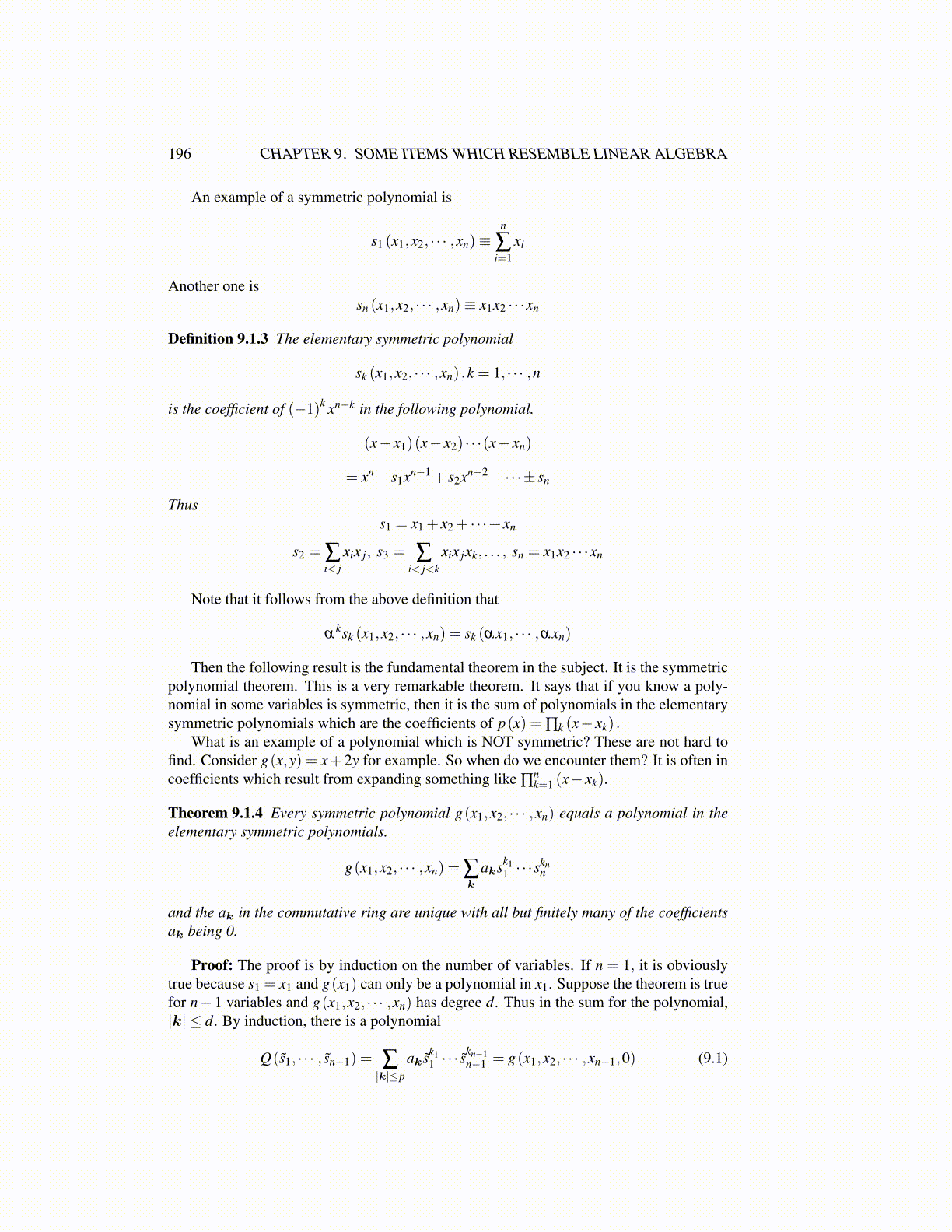
196 CHAPTER 9. SOME ITEMS WHICH RESEMBLE LINEAR ALGEBRA
An example of a symmetric polynomial is
s1 (x1,x2, · · · ,xn)≡n
∑i=1
xi
Another one issn (x1,x2, · · · ,xn)≡ x1x2 · · ·xn
Definition 9.1.3 The elementary symmetric polynomial
sk (x1,x2, · · · ,xn) ,k = 1, · · · ,n
is the coefficient of (−1)k xn−k in the following polynomial.
(x− x1)(x− x2) · · ·(x− xn)
= xn− s1xn−1 + s2xn−2−·· ·± sn
Thuss1 = x1 + x2 + · · ·+ xn
s2 = ∑i< j
xix j, s3 = ∑i< j<k
xix jxk, . . . , sn = x1x2 · · ·xn
Note that it follows from the above definition that
αksk (x1,x2, · · · ,xn) = sk (αx1, · · · ,αxn)
Then the following result is the fundamental theorem in the subject. It is the symmetricpolynomial theorem. This is a very remarkable theorem. It says that if you know a poly-nomial in some variables is symmetric, then it is the sum of polynomials in the elementarysymmetric polynomials which are the coefficients of p(x) = ∏k (x− xk) .
What is an example of a polynomial which is NOT symmetric? These are not hard tofind. Consider g(x,y) = x+2y for example. So when do we encounter them? It is often incoefficients which result from expanding something like ∏
nk=1 (x− xk).
Theorem 9.1.4 Every symmetric polynomial g(x1,x2, · · · ,xn) equals a polynomial in theelementary symmetric polynomials.
g(x1,x2, · · · ,xn) = ∑k
aksk11 · · ·s
knn
and the ak in the commutative ring are unique with all but finitely many of the coefficientsak being 0.
Proof: The proof is by induction on the number of variables. If n = 1, it is obviouslytrue because s1 = x1 and g(x1) can only be a polynomial in x1. Suppose the theorem is truefor n−1 variables and g(x1,x2, · · · ,xn) has degree d. Thus in the sum for the polynomial,|k| ≤ d. By induction, there is a polynomial
Q(s̃1, · · · , s̃n−1) = ∑|k|≤p
aks̃k11 · · · s̃
kn−1n−1 = g(x1,x2, · · · ,xn−1,0) (9.1)